Even its name is interesting and connected to its creation. Towards the end of the 1770s a wheelwright by the name of János Fellner owner the plot of land that would become the present-day square. At the time Ráday Street was being developed slowly and was dominated by single-storey houses with mainly agricultural livelihoods. Small vegetable gardens and even smaller herb gardens divided the houses.
In 1795 master Fellner donated his plot to the building of a Catholic Church. The city council was happy to support the initiative and formed a small square around the plot to ensure the church would have enough space. The little church was completed by 1822 but was intended as a temporary fix.
The Franciscans of Pest were tasked with organising the religious life of those living in the area. At the time the square was known merely as Templom ('church') Square. The name was changed several times until 1874 when it was given its current name in honour of Cardinal Tamás Bakócz – based on the name variant most commonly used at the time.
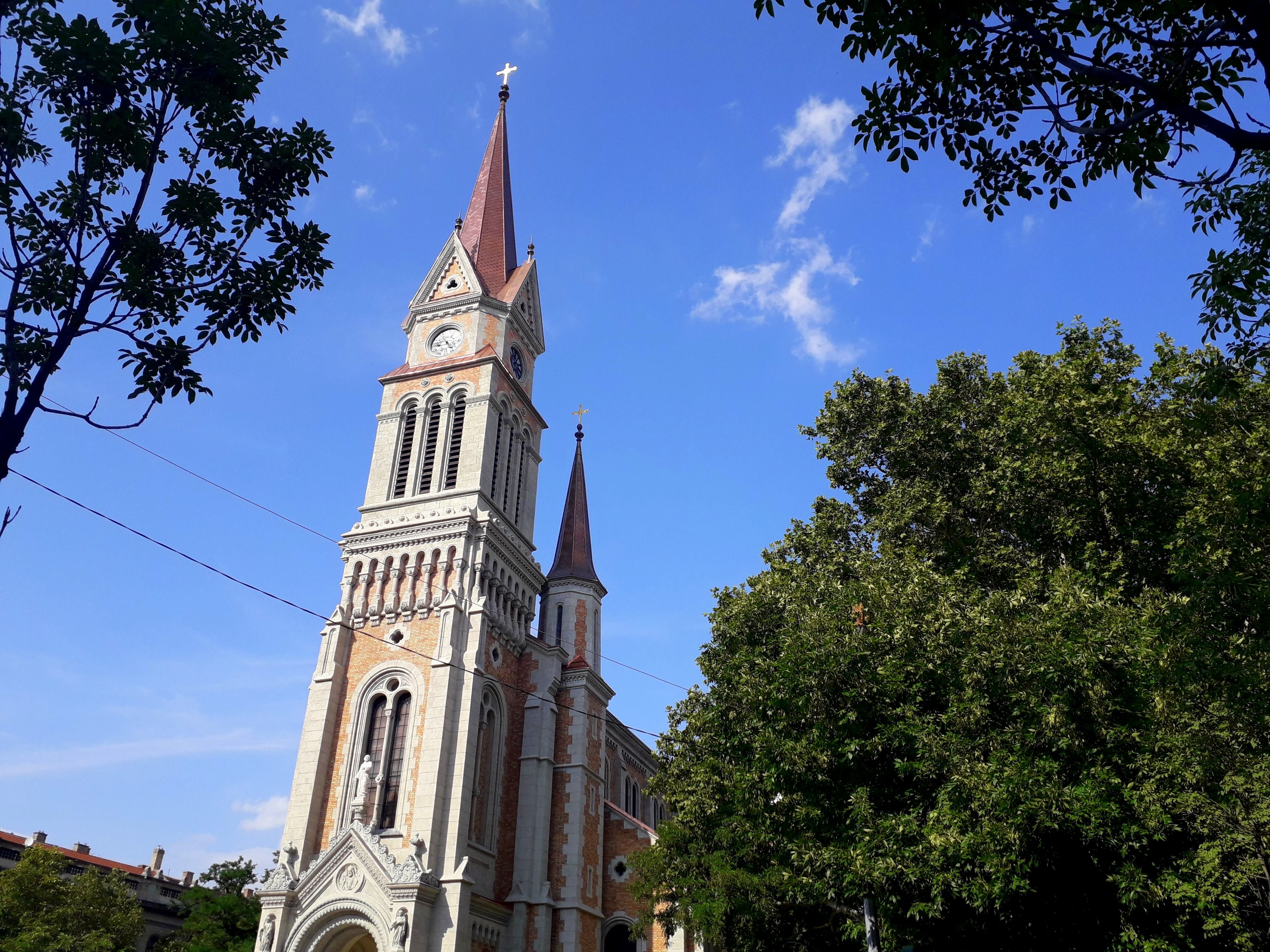
Bakáts Square Church today (Photo: Zsófia Viczián/pestbuda.hu)
The square was rebuilt to its current form after the major 1838 flood. The massive icy flood destroyed almost all buildings in the area. The small church was so severely damaged that no attempt was made to repair it. The City Council redrew the plots around the square, ensuring that a future church could stand in the centre of the square.
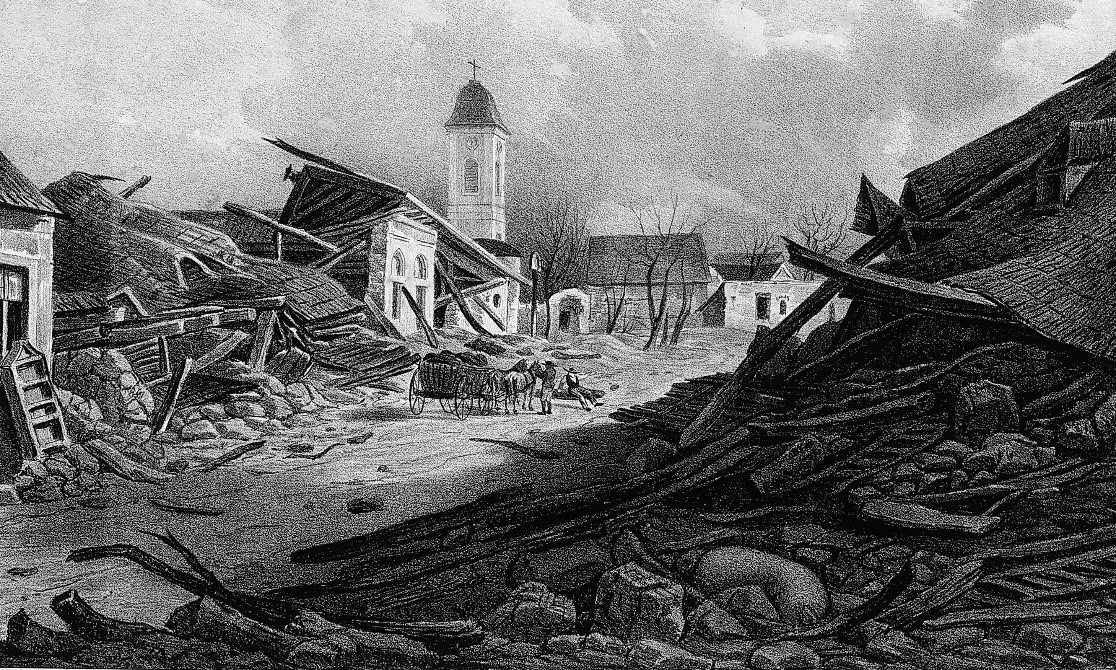 The square after the flood on a lithograph by Károly Klette, 1838 (Source: Ferencváros Local History Collection)
The square after the flood on a lithograph by Károly Klette, 1838 (Source: Ferencváros Local History Collection)
Thus the community had a church and a square. Their next wish was to build a school. The small two-storey building on the corner of the present-day Knézich Street was completed in 1859 and built entirely from public-donations under the direction of the master-builder János Wágner. The construction was such a success that the school continues to operate after a few modifications and an extra floor was added to the building.
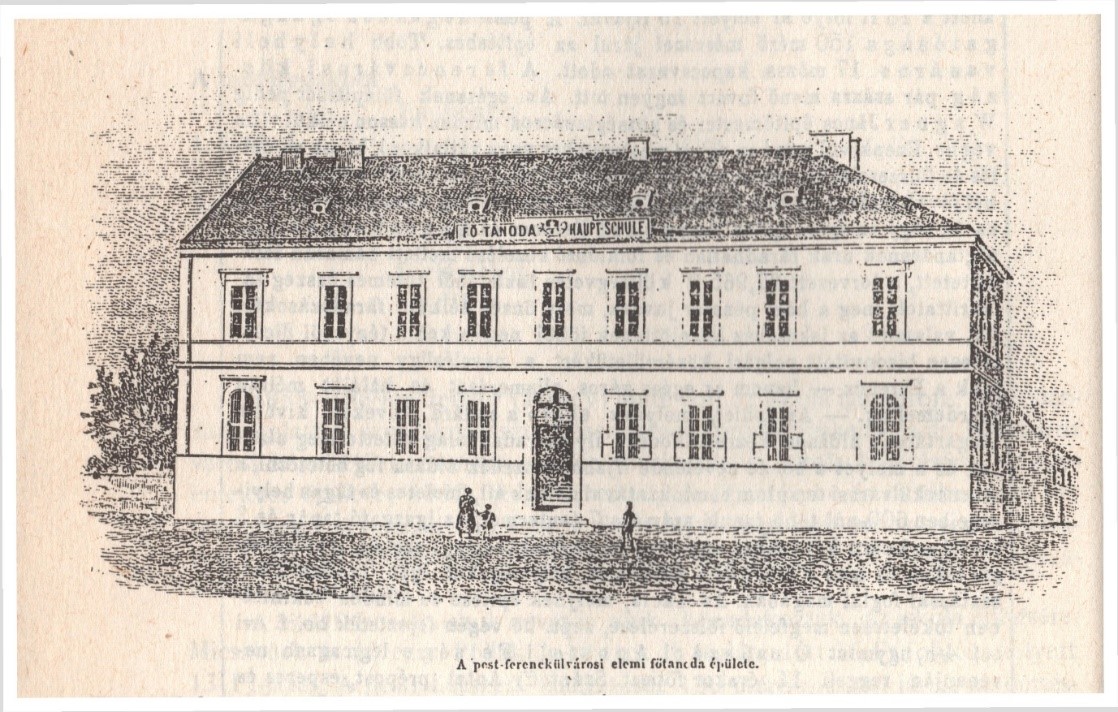 A picture of the first school in the magazine Iskolabarát, 12 September 1867
A picture of the first school in the magazine Iskolabarát, 12 September 1867
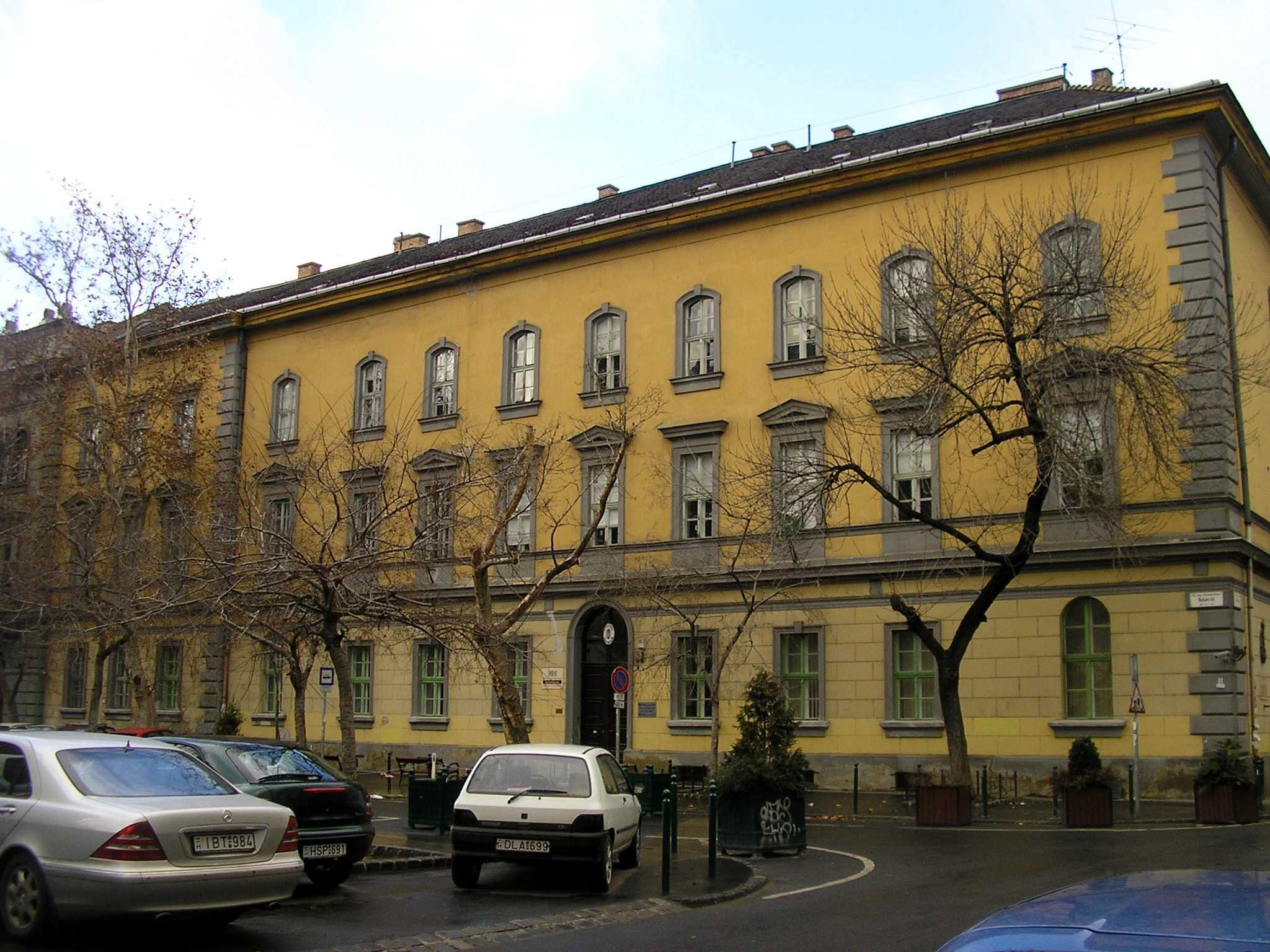 The Bakáts Square School in the 2000s (Source: Ferencváros Local History Collection)
The Bakáts Square School in the 2000s (Source: Ferencváros Local History Collection)
By 1870 a hospital had also opened on the square. Alongside the church, school and hospital, the first residential buildings were also completed. The square changed almost decade by decade.
The final church was completed in 1879 according to the Neo-Romanesque design of Miklós Ybl. The square and its buildings have since grown into a defining unity.
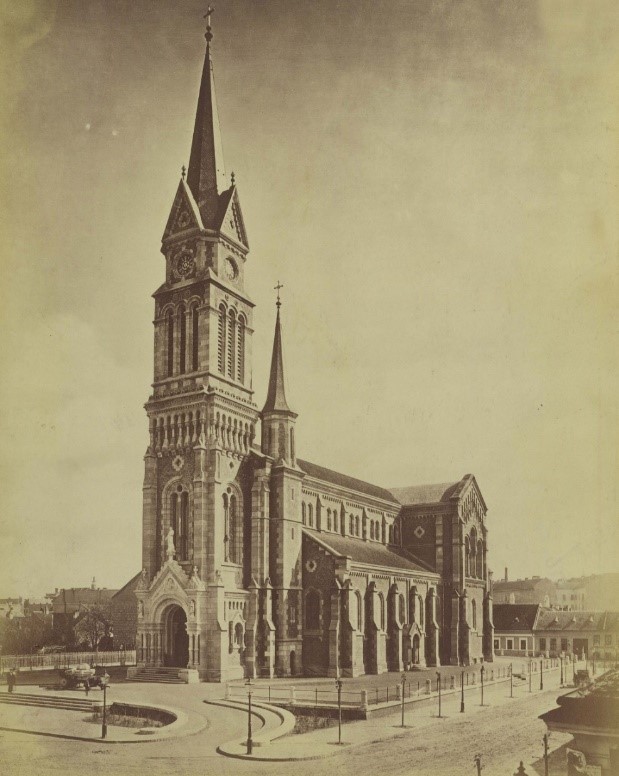
The church from the south photographed by György Klösz around 1882 (Photo: Fortepan/No.: 82308)
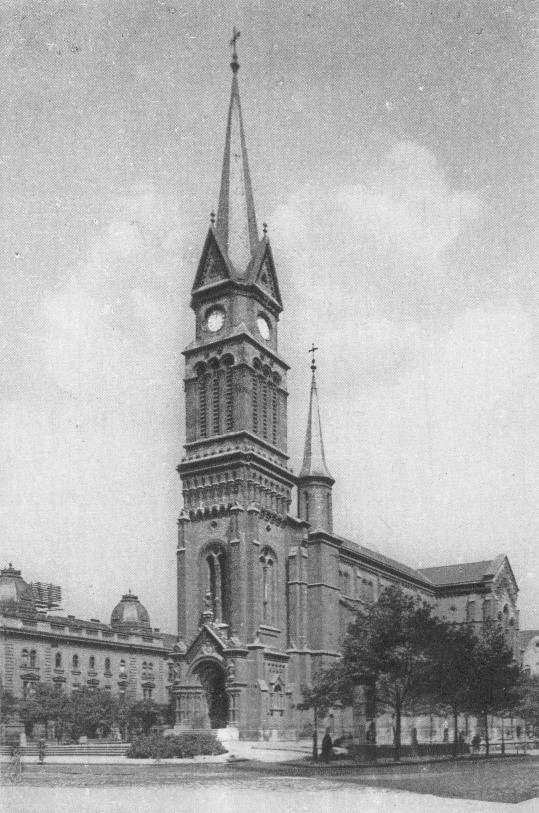
The church from the south photographed in the 1930s, the domed building on the left is the parish house (Photo: Ferencváros Local History Collection)
In 1884 the square changed once again. Its northern side was transformed according to the plans of Győző Czigler. The three buildings were designed as a unit and included a modernisation of the school building, the parish house, and an administrative building for the local council. The final building was unique because it housed administrative functions and recreation simultaneously.
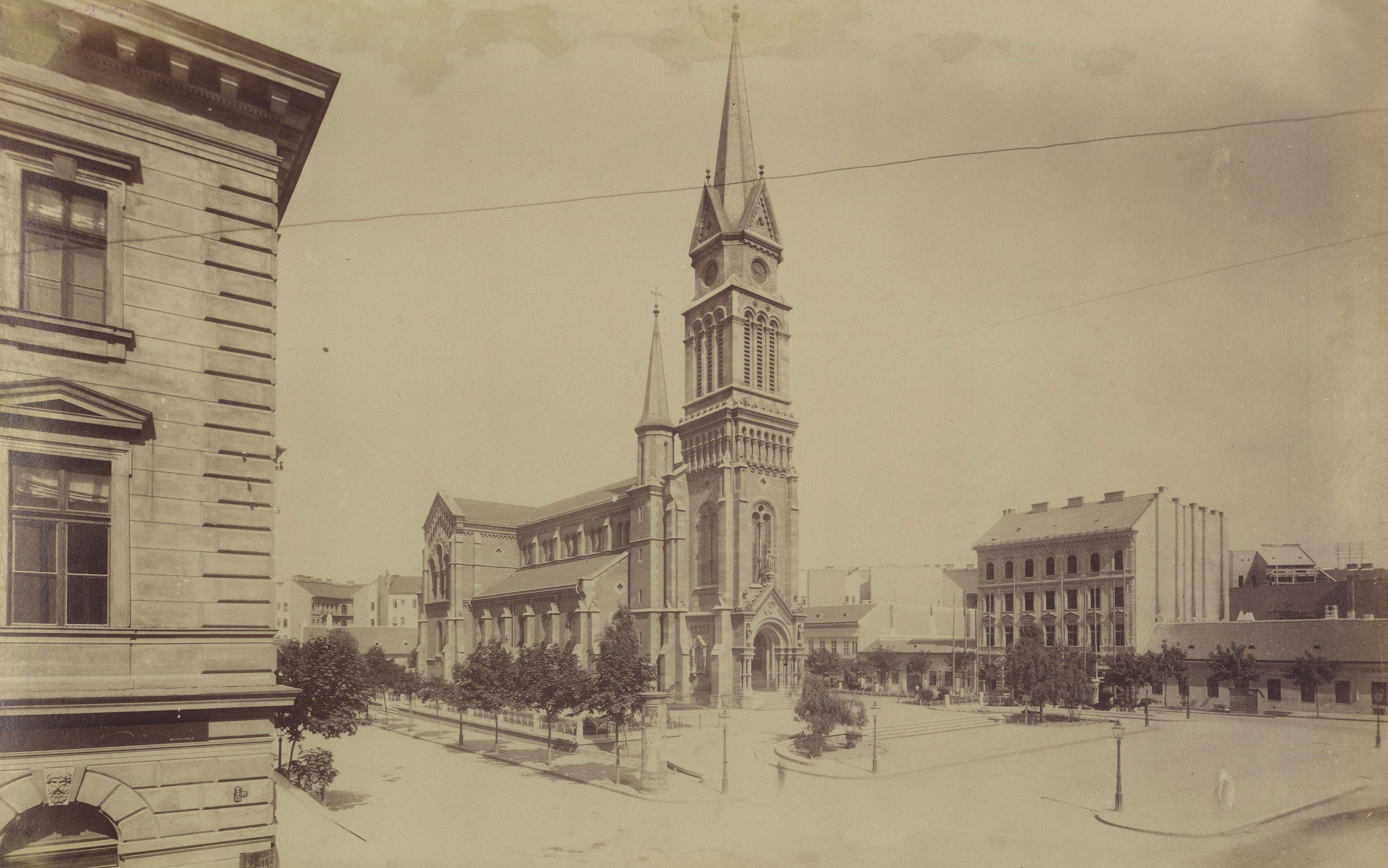
Bakáts Square, Church of Saint Francis of Assisi in 1900 (Photo: Fortepan/No.: 82353)
%4005-01-22.jpg) The Roman Catholic Parish under 13 Bakáts Square
The Roman Catholic Parish under 13 Bakáts Square
The two-storey building housed a restaurant on the ground floor, while an events hall was available to local citizens of the first floor. TThe Ferencváros Citizens' Club was quickly formed which operated out of the building. A bowling alley was built on the empty plot behind the building, but a chess and cards club also operated. When the Ferencváros Gymnastics Club (FTC) was formed in 1899, the only possible location for the festivities was the ceremonial hall of the Citizens' Club.
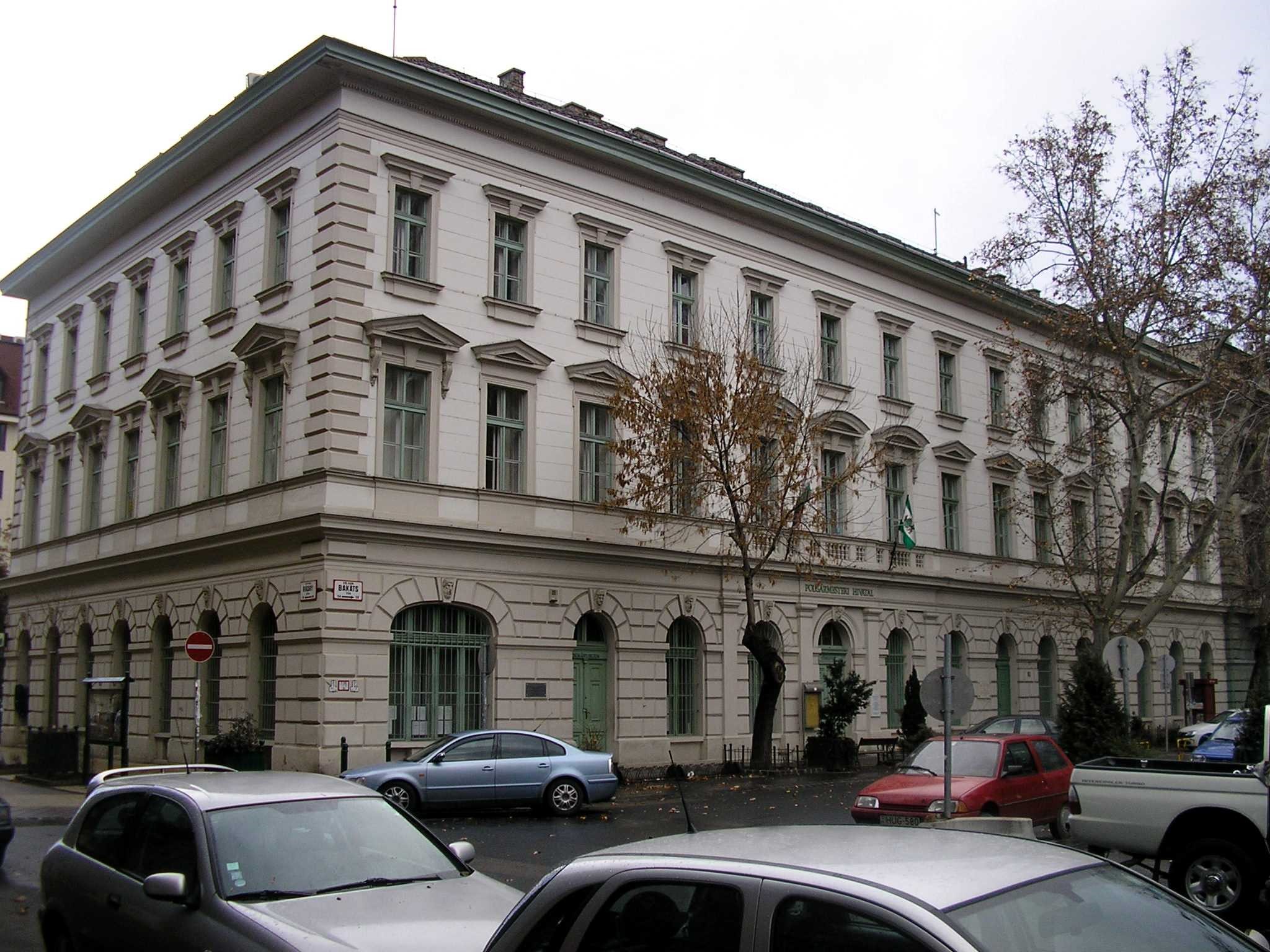 The administrative building today houses the Mayor's Office under 14 Bakáts Square
The administrative building today houses the Mayor's Office under 14 Bakáts Square
By the beginning of the 1900s, almost all buildings needed by a local community could be found on Bakáts Square. But newer areas of life were yet to be conquered. In 1901 a new residential building designed to house the arts was completed according to plans by Ferenc Paulheim. The six-storey building housed two large studio apartments. One of them housed a painter, the other a photographer. A cinema operated on the ground floor until 1918.

3 Bakáts Square today (Photo: Ferencváros Local History Collection)
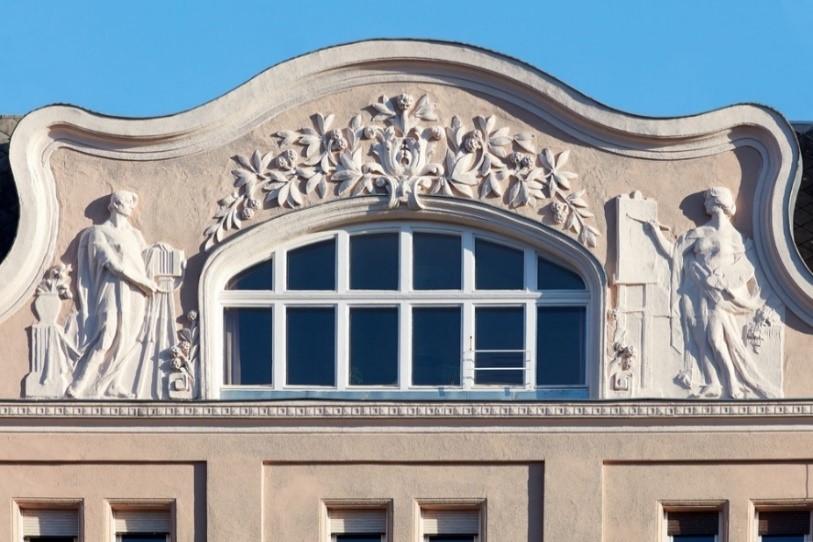
Reliefs next to the windows of the studio apartments: right: a female painter, left: a male photographer (Photo: Ferencváros Local History Collection)
The final multifunctional building was completed in 1906 and housed the short-lived Christian Consumer Cooperative under 1 Bakáts Square. The building was purchased in 1916 by the Hangya Cooperative which opened showrooms on the ground floor. The historicist style of the building is reflected in detailed animal and plant decals. Today the showroom is the Marriage Hall of the 9th District.
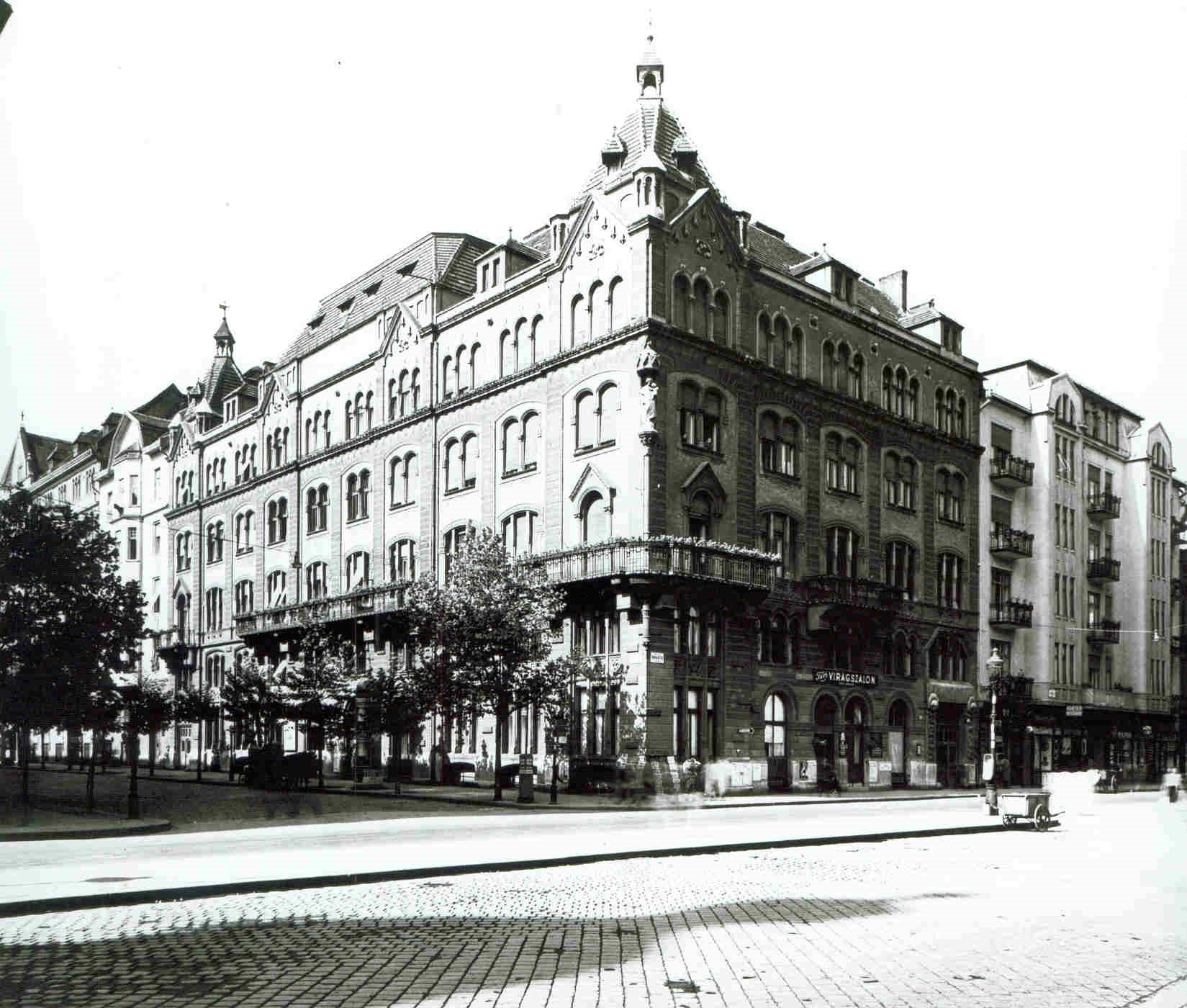 1 Bakáts Square around 1910 (Photo: Ferencváros Local History Collection)
1 Bakáts Square around 1910 (Photo: Ferencváros Local History Collection)
The square, of course, survived the turbulent 20th century and was damaged during both the Second World War and 1956 revolution and war of independence. In 1944 the church was hit by a bomb, and the parish house and administrative building were also heavily damaged. The two domes decorating the corners of the parish were destroyed, and could not be rebuilt after the war.
%4005-01-22.jpg)
The 1956 Memorial on the Square
The square was the site of several skirmishes in 1956 and several revolutionaries, Soviet troops and civilians fell casualty to these. The dead were buried around the church, and has been considered sacred ground ever since. Following 4 November even the church fell victim to Soviet tanks, its main entrance was shot and the tower damaged. Despite this, the houses around the square survived relatively unscathed, and the church was renovated.
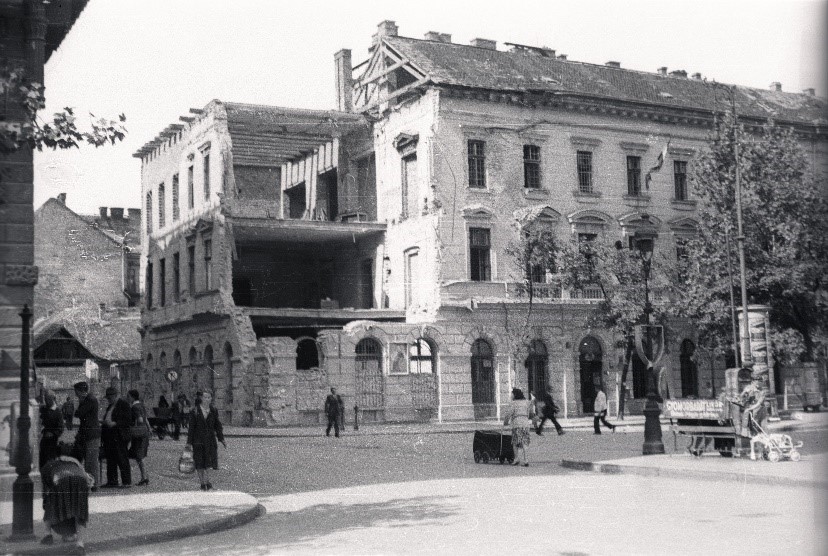
The administrative building after being bombed in 1944 (Photo: Fortepan/No.: 45598)
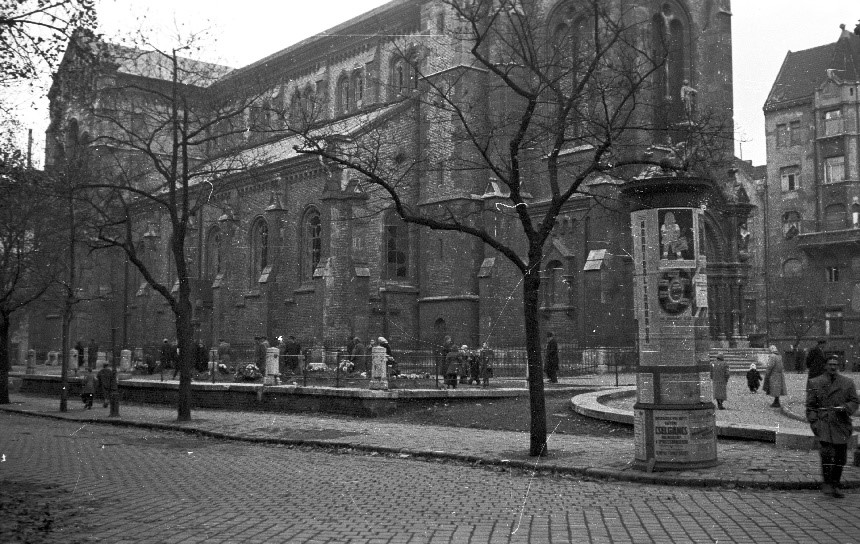
Graves around the church in early November 1956 (Photo: Fortepan/No.: 40188)
Many decades have passed since then, and plans to renovate the square arise from time to time. After the fall of socialism, an underground parking garage was planned but eventually forgotten. For ten years from 1992 the square also served as the setting for the Ferencváros Summer Festival, and thousands would visit it during a more popular performance.
A few years ago, the issue of renovating the square was raised again and is currently in the planning phase. The façade of the church was fully renovated last year. Hopefully, the square itself will follow in the footsteps of the church soon, so that all visitors may enjoy the shade of the trees on Bakáts Square in peace.
Cover photo: Bakáts Square (Photo: Ferencváros.hu)

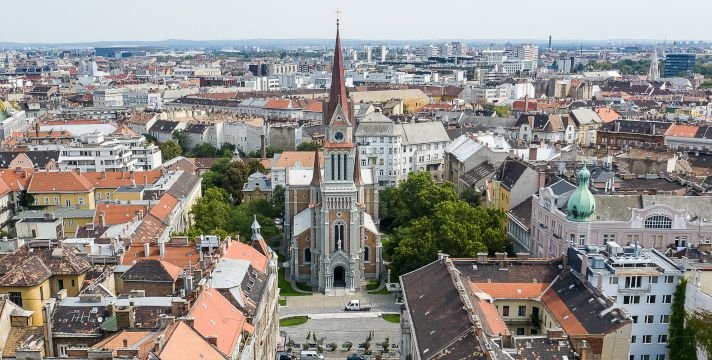



































Hozzászólások
Log in or register to comment!
Login Registration